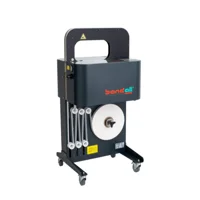
End-of-Line packaging solutions: Why more companies are switching to banding
The end of the packaging line often carries more weight than it gets credit for. It’s the final stage where your product receives those essential finishing touches, whether it’s being prepared for retail display or shipment. This is where presentation and logistics come together to ensure your product reaches its destination in optimal condition.
At this point, elements such as labeling, branding, or bundling are carefully applied. These steps not only get them ready for secure transport but also enhance its visual appeal and market readiness.
Traditionally, end-of-line solutions like strapping, shrink wrapping, and cardboard boxes have been the go-to options. However, a growing number of companies are now transitioning to banding, a better alternative that aligns with both operational efficiency and environmental responsibility.
What Is End-of-Line packaging?
End-of-line packaging is the final step in preparing products for transport, storage, or retail display. It typically involves grouping or stacking products, securing them for stability, and applying branding or labeling elements.
Banding is increasingly recognized as a versatile and efficient solution for this stage. With the ability to act as a secure seal, carry branding and variable data like barcodes, and bundle multiple items together, banding fulfills several key end-of-line functions in a single step. Its adaptability across product types and packaging requirements makes it suitable performance-driven operations.
Common challenges with traditional methods
Traditional end-of-line packaging solutions, while familiar and widely used, often come with a set of operational and environmental drawbacks:
- Excessive packaging waste: Solutions like shrink wrapping rely heavily on single-use plastics, contributing to growing landfill concerns and regulatory scrutiny.
- Oversized or bulky packaging: Using large cartons or boxes to secure products can result in underutilized space and inflated shipping costs, especially when packaging is not tailored to the product's size.
- Limited product visibility: Packaging solutions, such as packaging sleeves may carry essential branding and labeling, but they also obscure the product and consume more resources than necessary.
- High energy and material costs: Methods that separate bundling, sealing, and labeling into multiple steps can slow production and increase both energy consumption and material usage.
As regulations tighten and consumer demand for sustainable packaging intensifies, manufacturers are increasingly reevaluating the final stage of their packaging processes.
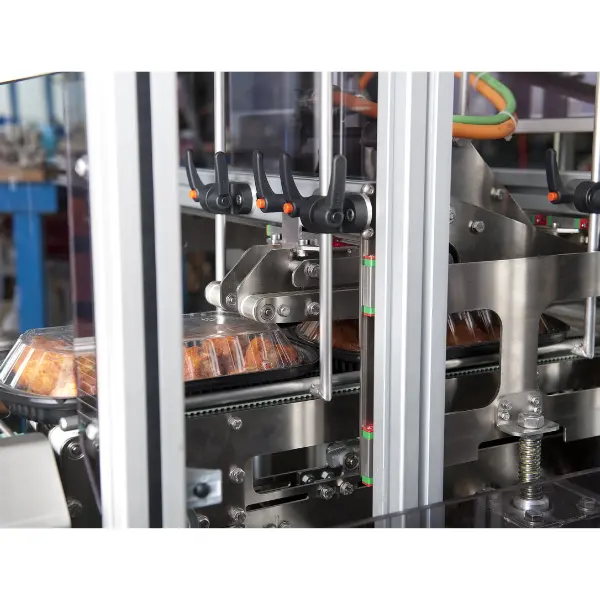
Why banding is gaining ground as an End-of-Line solution
Banding, using a slim paper or film strip to secure, bundle, or label products, is fast becoming a preferred end-of-line method for brands focused on efficiency and sustainability. Here’s why this streamlined approach is catching on across industries:
- Minimal material, maximum hold: Banding delivers strong, stable bundling using only what’s needed and eliminates overpackaging and excess waste. This offers more storage space as excess bulk has been removed.
- Seamless automation: Banding machines, whether semi- or fully automatic, are tailormade to easily integrate into existing packaging lines. This makes the switch to banding seamless once the machine has been installed in your packaging line.
- Labeling simplified: With on-band printing, product info, barcodes and other pieces of information can be added directly to the band. Therefore, with banding you can combine labeling and branding into one efficient step.
- Sustainable by design: Choose recyclable, ultra-thin paper or film bands to reduce plastic use and align with evolving sustainability goals.
- Adaptable across industries: From cosmetics and pharmaceuticals to food trays and e-commerce parcels, banding accommodates a wide range of shapes, sizes, and packaging requirements.
Comparing banding to other End-of-Line methods
| Method | Material Use | Automation | Product Visibility | Sustainability |
|---|---|---|---|---|
| Shrink Wrap | High | Medium | Medium | Medium |
| Strapping | Low | Medium | High | Medium |
| Packaging Sleeves | Medium | Low | Low | Medium |
| Banding | Low | Medium | High | Excellent |
The bottom line
As end-of-line packaging becomes a focal point for improving efficiency, reducing waste, and meeting sustainability goals, banding is emerging as a compelling alternative. Its minimal material use, automation readiness, and dual function as both packaging and labeling make it a smart, forward-thinking choice for modern operations.
Curious about how banding could fit your line?
If you're reassessing your end-of-line process, banding may offer the flexibility, speed, and eco-consciousness your operation needs. From automated integration to sustainable materials, there's likely a solution tailored to your production setup.
Have questions about banding solutions?
Together we can find opportunities to optimize your packaging.
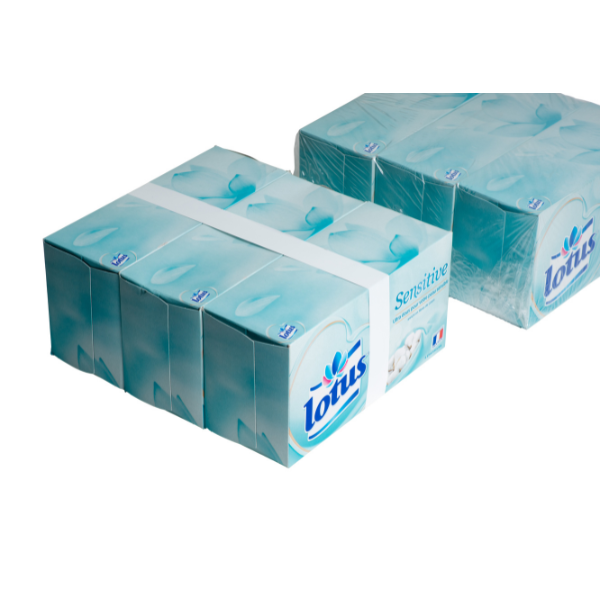
Bands vs shrink-wrap: Do more with less
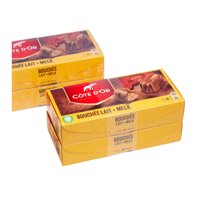
Bands vs shrink-wrap: Material usage and waste
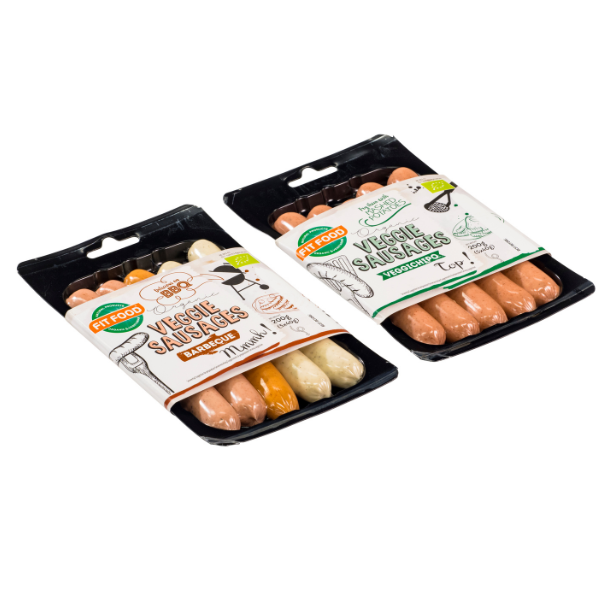
Band vs sleeves: Which is more efficient?
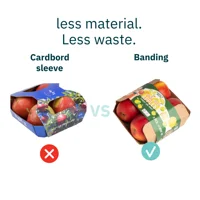
Banding vs. other solutions
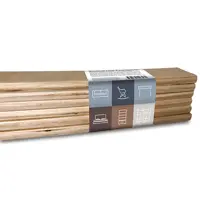
Applications of banding
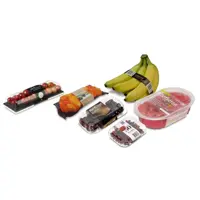
Benefits of banding
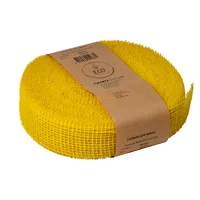
Zwartz - From shrink wrap to paper bands

Novatrade - Improved quality and efficiency
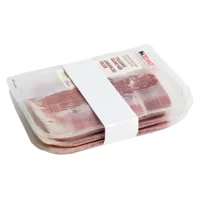
Packaging food products
